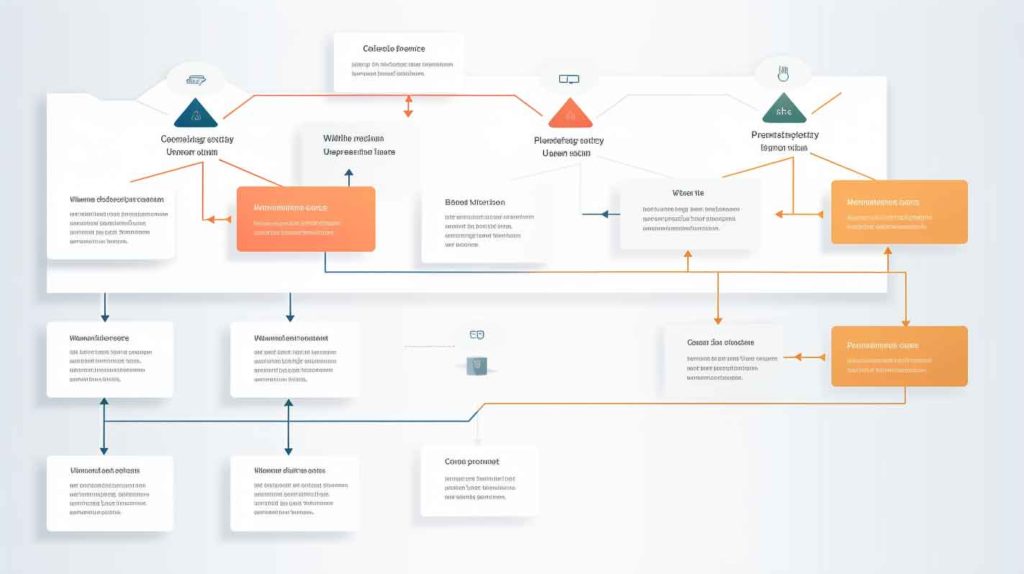
In today’s digital landscape, where each click holds immense value, businesses are constantly seeking ways to enhance their online performance. One crucial aspect of this endeavour is Conversion Rate Optimisation (CRO), which revolves around improving User Experience (UX) to boost the percentage of website visitors who take desired actions, be it making a purchase, signing up, or downloading a resource. In this comprehensive guide, we will delve into the top 10 best practices for Conversion Rate Optimisation UX and explore practical strategies to implement them effectively.
Table of Contents
- Understanding the User Journey
- Responsive Web Design
- Streamlined Navigation
- High-Quality Visuals
- Effective Call-to-Action Buttons
- A/B Testing
- Loading Speed Matters
- Mobile Optimisation
- Simplify Forms
- Trust Signals and Social Proof
- User Feedback and Continuous Improvement
- Multivariate Testing
- Personalisation for Enhanced UX
- Data-Driven Decision Making
- Post-Conversion Engagement Strategies
1. Understanding the User Journey
To optimise conversion rates, it is essential to comprehend your users’ journey on your website thoroughly. Analyse their behaviour, from the moment they land on your site to the point of conversion. Identify potential roadblocks or distractions and address them. Utilise tools like Google Analytics to gain insights into user behaviour.

2. Responsive Web Design
A responsive website design is no longer optional. With a significant portion of users accessing websites via mobile devices, ensuring your site looks and functions well on all screen sizes is paramount. Consider adopting a mobile-first design approach to prioritise the mobile experience.
3. Streamlined Navigation
Simplicity is key. Ensure that your website’s navigation is intuitive and easy to follow. Visitors should be able to find what they’re looking for without any hassle. Employ clear menu structures and consider implementing a sticky navigation bar for easy access to essential pages.
4. High-Quality Visuals
Visual elements, including images and videos, play a vital role in user experience. Use high-quality visuals that are relevant to your content. Blurry images or irrelevant videos can deter users. Invest in professional photography and graphics when necessary.

5. Effective Call-to-Action Buttons
Your call-to-action (CTA) buttons should stand out and communicate what action you want users to take. Use persuasive language and contrasting colours to make CTAs irresistible. Test different CTA variations to find the most effective ones.
6. A/B Testing
A/B testing involves comparing two versions of a webpage to see which one performs better. This practice helps you identify what resonates with your audience and fine-tune your website. Test various elements, such as headlines, images, and CTA placements.
7. Loading Speed Matters
In today’s fast-paced world, users have little patience for slow-loading websites. Ensure your site loads quickly, or you risk losing potential customers. Compress images, minimise code, and utilise Content Delivery Networks (CDNs) to improve loading times.
8. Mobile Optimisation
Mobile optimisation goes beyond responsive design. It means tailoring your content and user interface for mobile users, including optimising load times and touch-friendly elements. Mobile-friendly layouts and simplified menus are crucial.
9. Simplify Forms
If your website requires users to fill out forms, keep them as short and straightforward as possible. Lengthy forms can be a turn-off, so only ask for essential information. Consider implementing autofill features to save users time.
10. Trust Signals and Social Proof
Display trust signals such as customer reviews, security badges, and industry certifications prominently on your website. Social proof can significantly boost user confidence and conversion rates. Showcase positive testimonials and endorsements.
11. User Feedback and Continuous Improvement
Encourage user feedback through surveys, feedback forms, and customer support channels. Act on this feedback to make continuous improvements to your website. Show users that their opinions matter.
12. Multivariate Testing
In addition to A/B testing, consider multivariate testing, which allows you to test multiple elements simultaneously. This approach provides insights into how different combinations of elements affect user behaviour.
13. Personalisation for Enhanced UX
Implement personalisation strategies to deliver tailored content and recommendations to users based on their preferences and past interactions. Personalised experiences can significantly increase engagement and conversions.
14. Data-Driven Decision Making
Leverage data analytics tools to gather insights into user behaviour. Use this data to make informed decisions about UX enhancements and CRO strategies. Monitor critical metrics and KPIs closely.
15. Post-Conversion Engagement Strategies
Don’t overlook post-conversion engagement. Engage with customers through follow-up emails, personalised recommendations, and loyalty programmes to encourage repeat business and referrals.
In conclusion, Conversion Rate Optimisation UX is an ongoing process that demands continuous improvement and adaptation. By implementing these ten best practices and embracing additional strategies, you can enhance your website’s user experience, boost conversion rates, and ultimately drive business growth.
FAQs
1. What is Conversion Rate Optimisation (CRO)?
Conversion Rate Optimisation (CRO) is the practice of improving a website’s performance to increase the percentage of visitors who complete a desired action, such as making a purchase or filling out a form.
2. Why is mobile optimisation important for CRO?
Mobile optimisation is crucial because a significant portion of internet users access websites on mobile devices. Ignoring mobile users can lead to lost opportunities for conversions.
3. How can I effectively use A/B testing for CRO?
To use A/B testing effectively, create two versions of a webpage with one differing element (e.g., a different CTA button). Then, compare their performance to determine which version leads to more conversions.
4. What are trust signals, and why do they matter?
Trust signals are elements on your website that build trust with visitors, such as customer testimonials, security badges, and industry certifications. They matter because they instil confidence in users, increasing the likelihood of conversions.
5. How often Should I revisit my CRO strategy?
Your CRO strategy should be a continuous process. Regularly monitor your website’s performance, gather user feedback, and adapt your strategy accordingly to keep improving your conversion rates.
Our design team excels at business branding, graphics, and websites. Let us help your company reach its goals and win with beautiful design.